Blair Footsteps Tour #6: Logan
Introduction
Text-to-speech Audio
While the marching miners of 1921 never made it as far as Logan, the city played a crucial role in Sheriff Don Chafin's defense of Blair Mountain and Spruce Fork Ridge during the battle of late August and early September. Not only did the city serve as an assembly point and supply depot for 3,000 deputies, State Police, and hastily activated West Virginia National Guard troops commanded by Colonel William Eubank of the National Guard, Chafin and Eubank set up their command post at downtown Logan's Aracoma Hotel. At the close of the battle, U.S. Army troops disembarked from trains in Logan and moved onto the battlefield to begin disarming miners on September 3, 1921.
-------------------------------
This entry is a digital companion to the Blair Footsteps exhibit trail, available to the public from August 30 - September 11, 2021 as part of the Battle of Blair Mountain Centennial. The map location of this entry indicates where the temporary exhibit can be found. The Logan Station of Blair Footsteps is located at the entrance to the Logan Area Public Library, near Logan Middle School.
Images

State Police and Mine Guards in Defensive Fortifications on Blair Mountain
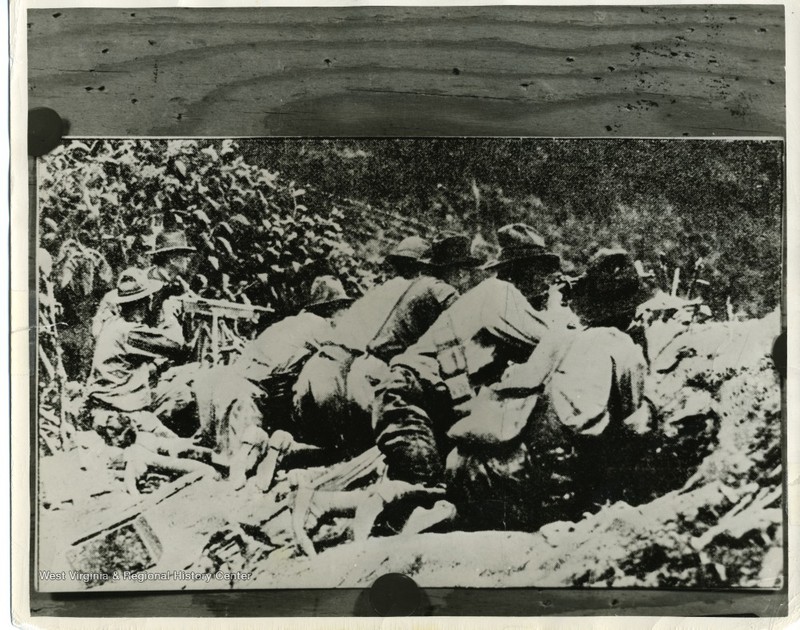
Sheriff Don Chafin, "Czar" of Logan County

Don Chafin and some of his many deputies in front of the Logan County Courthouse.
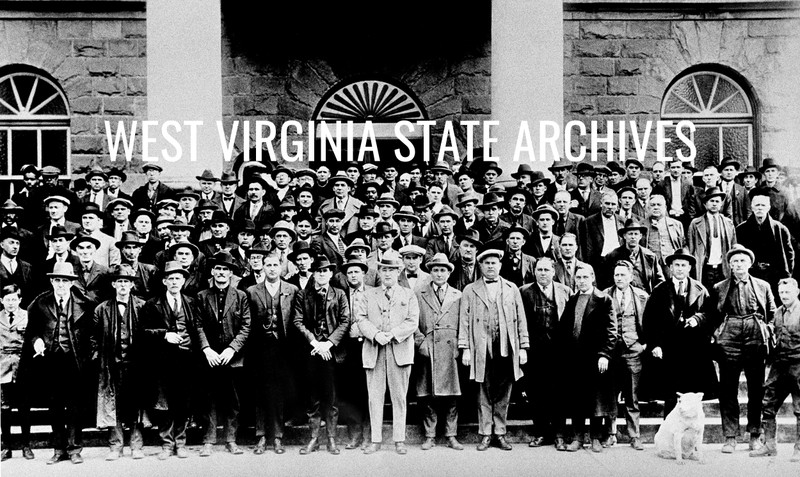
U.S. Army troops detraining with their equipment in Logan. They soon moved into the ridges surrounding the city and relieved the "Logan Defenders."
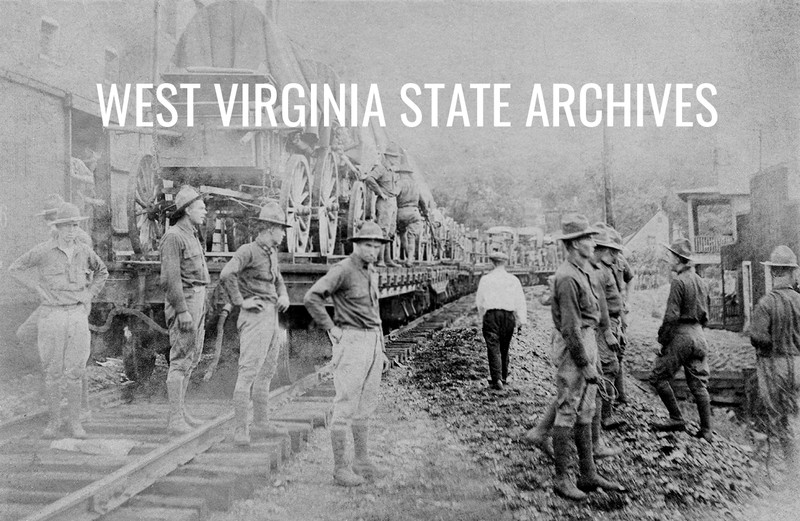
Weapons seized from disbanding miners by the U.S. Army in the aftermath of the battle.
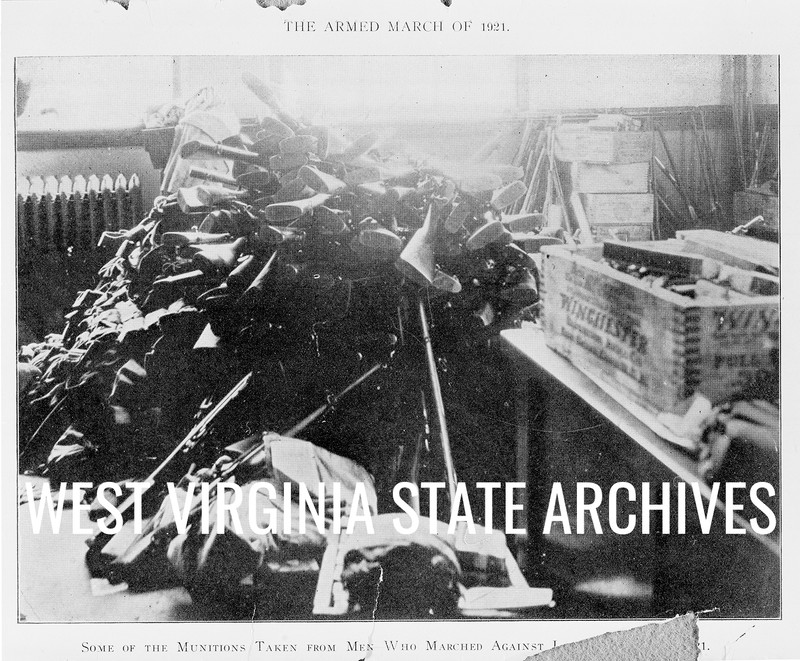
The town of Logan as it appeared in 1913, only a few years before the battle.
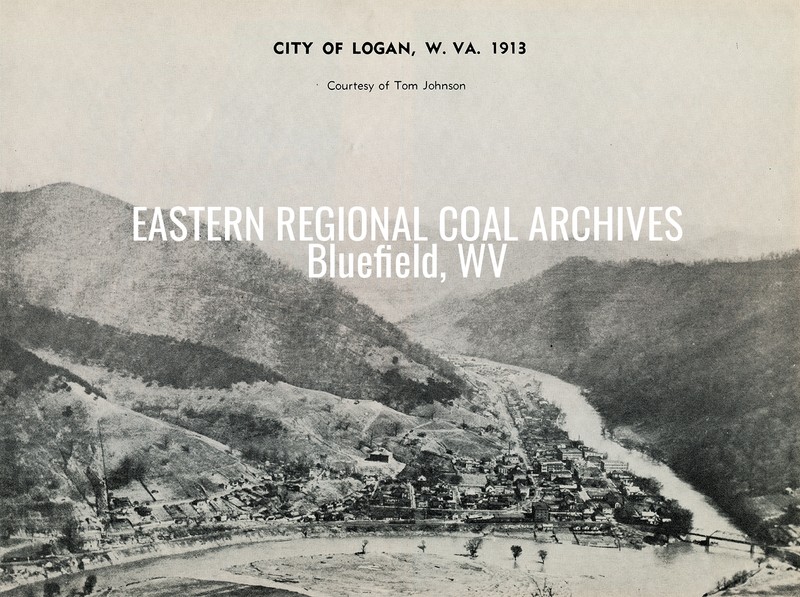
Backstory and Context
Text-to-speech Audio
"BLOODY ORGY OF HATE IS QUIESCENT IN BLACK DIAMOND MINE FIELDS OF WEST VA, FOR PERIOD OF ARMED TRUCE ONLY."
Thus shouted a headline in the Martinsburg Journal somewhat belatedly on September 14, 1921.[1] "Intercounty Labor Union War Rests," continued the subhead, "While U.S. Troops Stand Guard—Bitterness Not Lessened By Federal Intervention—Trigger Trial Pregnant with Future Strife." The headline was perhaps overly dramatic, and its forecast of future violence proved inaccurate, but similar sentiments were shared in newspapers across the nation.
The Martinsburg Journal's reporting's most egregious error was simply that it came over a week late. At the end of August and into early September, the Boone-Logan County line in southern West Virginia had been a scene of upheaval, violence, and class warfare as the Battle of Blair Mountain unfolded. As it did so, the town of Logan had been a bustling operational base for a paramilitary made of sheriff's deputies, State Police, mine guards, and other anti-union forces. But now a tense quiet prevailed in Logan since September 3, 1921 when the U.S. Army intervened and the "Red Neck Army" withdrew from their assault on Sheriff Don Chafin's defensive lines.
Logan County Sheriff Don Chafin devoted most of his career in public service—not to mention considerable county public resources—to the destruction of the United Mine Workers of America in the southern coal fields of West Virginia. It is difficult to say whether Chafin's staunch opposition to the union was rooted in convictions of principle or financial incentives, but it made little difference as far as the result was concerned. Chafin's dogged determination to resist the UMWA once resulted in the brawny peace officer drunkenly barging into union headquarters in Charleston, starting a fight, and taking a bullet to the chest from District 17 Vice President Bill Petry. What is certain that the sheriff's cozy relationship with regional coal operators was a mutually beneficial one, from which Chafin grew quite wealthy.
When he learned that armed coal miners were gathering on Lens Creek to march on Mingo County in August of 1921, he mustered his own paramilitary force to meet it. It was no obstacle for the "King of Logan." He had already spent over a decade in local government consolidating power. As a young county clerk Chafin wrested power from coal operators by abolishing the practice of employing private mine guards—then increased their dependence on his reign by establishing a special police force to replace the mine guards, and forcing the coal operators to pay for its employment. He made over a room in the county courthouse as his private arsenal and governed the local press, court officials, juries, and school teachers with a firm hand. As Chafin neared the peak of his power he could, with relative impunity, brutalize and eject from the county those who didn't fall in line. He was nicknamed the "Czar" of Logan in pro-labor publications for his oppressive, violent methods.
"No armed mob will cross Logan County," Chafin declared when the miners began to muster in August 1921 for an armed march on Mingo County to free imprisoned comrades in Williamson. He had thoroughly laid the groundwork to make good on that promise.
In an era before modern highways and paved roads, the miners' army had only so many paths to Mingo, and Chafin's armed guards were constantly watching the local train stations. That left only the mountain passes and valleys to Logan's east and northeast. Chafin moved quickly to have his men build a defensive line of primitive fortifications from Blair Mountain to Crooked Creek Gap, blocking most of the plausible routes his foes could take.
At 2:00 AM on Thursday August 25, as the miners began to move south, the Czar deployed thousands of his men with small arms and machine guns from his private arsenal, or hurriedly purchased with coal company funds, to their mountain bulwarks to repel the invaders. Logan readied for war—but the war waited as word arrived that a United States Army General had arrived to disperse the Red Necks. Chafin recalled his men on Saturday afternoon, August 27, as word was passed that the miners were disbanding. The confrontation seemed to be averted.
Displaying the pugnaciousness for which he had become famous, Chafin chose this delicate moment to execute warrants against union men in Clothier that had skirmished with his State Police allies weeks earlier. At Chafin's orders, West Virginia State Police Captain James Brockus led a party toward the Spruce Fork Valley and exchanged fatal gunfire with miners near Sharples. Chafin and Brockus's assault was a breach of the implied peace and the Red Neck Army's march flamed back up with renewed fury.
Logan rapidly became a bustling supply depot as Chafin's men scurried back to their mountain fortresses. On the other side of Spruce Fork Ridge, miners also gathered in the Spruce Fork Valley between Jeffrey and Blair and prepared for their incursion. It began on Tuesday, as patrols advanced on Blair Mountain and fought with Chafin's men early the next morning. Three defenders and one miner were killed. Another column out of Jeffrey moved up Hewett Creek and into Crooked Creek gap where they met heavy gunfire, including one of Chafin's Browning machine guns which gunned down two young miners. Miners harassed Chafin's machine gun nest with small arms fire as they brought up their own automatic weapon. Logan machine gunner Tony Gaujot kept firing until his gun jammed, and Chafin's line hurriedly withdrew half a mile for fear of being overrun.
Back in Logan, the situation grew tense in Chafin's makeshift command center at the Aracoma Hotel, as he and his field commander, Colonel William Eubank of the West Virginia National Guard, learned of the miners' tactical victory just five miles northeast of town. Eubank rushed reinforcements to bolster the line at Crooked Creek Gap while Chafin reached deeper into his arsenal. Airplanes that had been used just days prior to drop leaflets of President Harding's proclamation ordering the Red Necks to disperse were outfitted with new munitions: gas bombs to route the miners from their encampments and makeshift bases, and pipe bombs to punish the less fortunate ones. The bombings were largely ineffective, but they did signal Chafin's willingness to engage in total war against his countrymen if the situation became dire enough.
The escalating conflict—and, by the first days of September, the mounting casualties—tested the federal government's resolve not to get involved. West Virginia Governor Ephraim Morgan had asked for U.S. troops to intervene before the miners' offensive had fully began, on Monday, August 29, but was rebuffed. President Harding did, however, issue a proclamation ordering the miners to disperse by noon on September 1. But forces were in motion that no paper tiger could halt, and dropping leaflets of Harding's proclamation from airplanes was also ineffective. The President ordered Brigadier General Henry Bandholtz back to the region to enforce his edict, but still did not activate federal troops. The General soon wired Washington to recommend military intervention, soon over two thousand U.S. infantrymen were on trains bound for West Virginia.
Heavy fighting still raged at Crooked Creek Gap, and the Red Necks fought hard to reach the summit of Blair Mountain. Soon, through the same informal communication network that had previously been used to spread passwords transmit updates along the Red Neck Army's lines, a new message slowly spread through the ranks: the U.S. Army was being called in to end the battle. Journalist Boyden Sparks, present on the battlefield, witnessed the beginning of negotiations in Madison as Bill Blizzard, one of the Red Neck Army's commanders in the field, sauntered up to a U.S. Army officer to begin negotiating a cease-fire. Throughout Saturday and Sunday the message flowed down the valley, out the mountain passes, and up the steep slopes as Blizzard made the rounds with an Army escort.
To the west, the U.S. Army's 40th Infantry arrived by train in Logan and immediately deployed to Spruce Fork Ridge to send Chafin's men back to Logan and end the fight. Don Chafin, his deputies, and the State Police and National Guard filling his trenches were the miners' enemy, and they would not continue their assault against "Uncle Sam." Unit by unit, the miners turned back. Some surrendered their arms to U.S. soldiers along the way, but many distrusted the fragile surrender and concealed their weapons on their persons or in the forest. By September 4, the Red Neck Army had evaporated back into the hills.
Precise statistics regarding the actions of spontaneous citizen-armies are difficult to ascertain, but when the battlefields of Logan County fell silent, scores of miners were among the casualties. Chafin's defenders, entrenched and holding the high ground, suffered fewer losses. Over 900 miners were arrested as a result, and many were tried for conspiracy, murder, treason, and related charges. Most were acquitted, and an unexploded bomb dropped from one of Chafin's planes helped persuade a jury to acquit Bill Blizzard. Other miners endured brief prison sentences, but prosecutorial focus was directed solely at the union men. Some of the national media criticized the Czar for his escalation of the conflict, but neither Chafin nor his lieutenants were held to account for their roles in the bloody battle. Chafin died a rich man in Huntington in 1954.
----------------------
In late August and early September 2021, a small team of volunteers from the Preservation Alliance of West Virginia will install Blair Footsteps, a temporary outdoor exhibit trail which guides visitors through some of the important sites and events along the route of the miners’ march. The exhibit is funded in part by a grant from the National Coal Heritage Area Authority, and is an official event of the Battle of Blair Mountain Centennial.
Sources
[1] Weyer, Siegfried D.. "BLOODY ORGY OF HATE IS QUIESCENT IN BLACK DIAMOND MINE FIELDS OF WEST VA, FOR PERIOD OF ARMED TRUCE ONLY." Martinsburg Journal (Martinsburg) September 14th 1921. , 2-2.
Green, James. The Devil Is Here in These Hills. Edition First. New York, New York. Atlantic Monthly Press, 2015.
Lee, Howard B.. Bloodletting in Appalachia: The Story of West Virginia's Four Major Mine Wars And Other Thrilling Incidents On Its Coal Fields. Parsons, West Virginia. McClain Printing Company, 1969.
Savage, Lon. Thunder in the Mountains: The West Virginia Mine War, 1920-1921. Pittsburgh, Pennsylvania . University of Pittsburgh Press, 1990.
Shogan, Robert. The Battle of Blair Mountain: The Story of America's Largest Labor Uprising. Boulder, Colorado. Westview Press, 2004.
West Virginia University West Virginia & Regional History Center
West Virginia University West Virginia & Regional History Center
West Virginia State Archives
West Virginia State Archives
West Virginia State Archives
Eastern Regional Coal Archives, clipping files.
